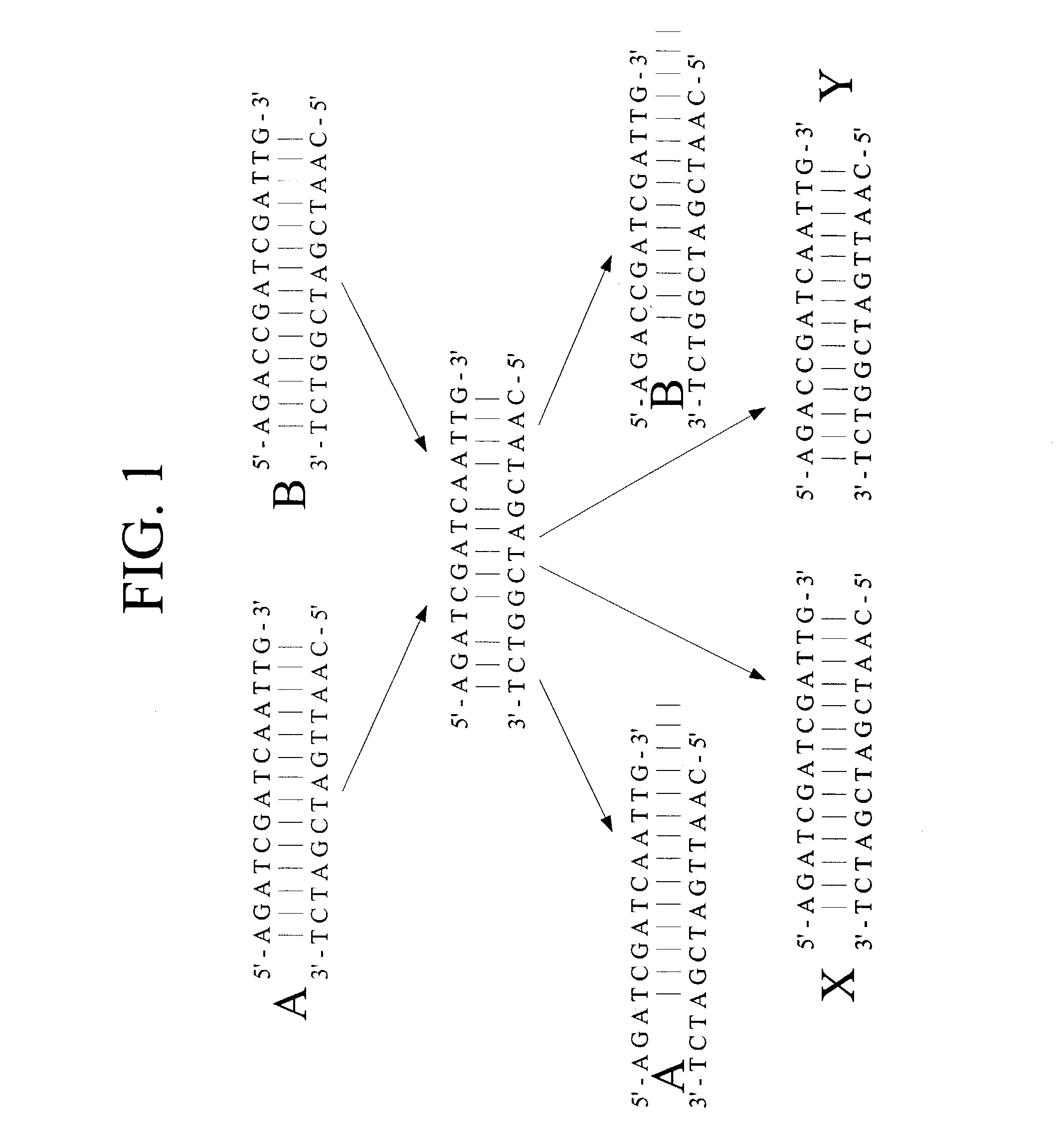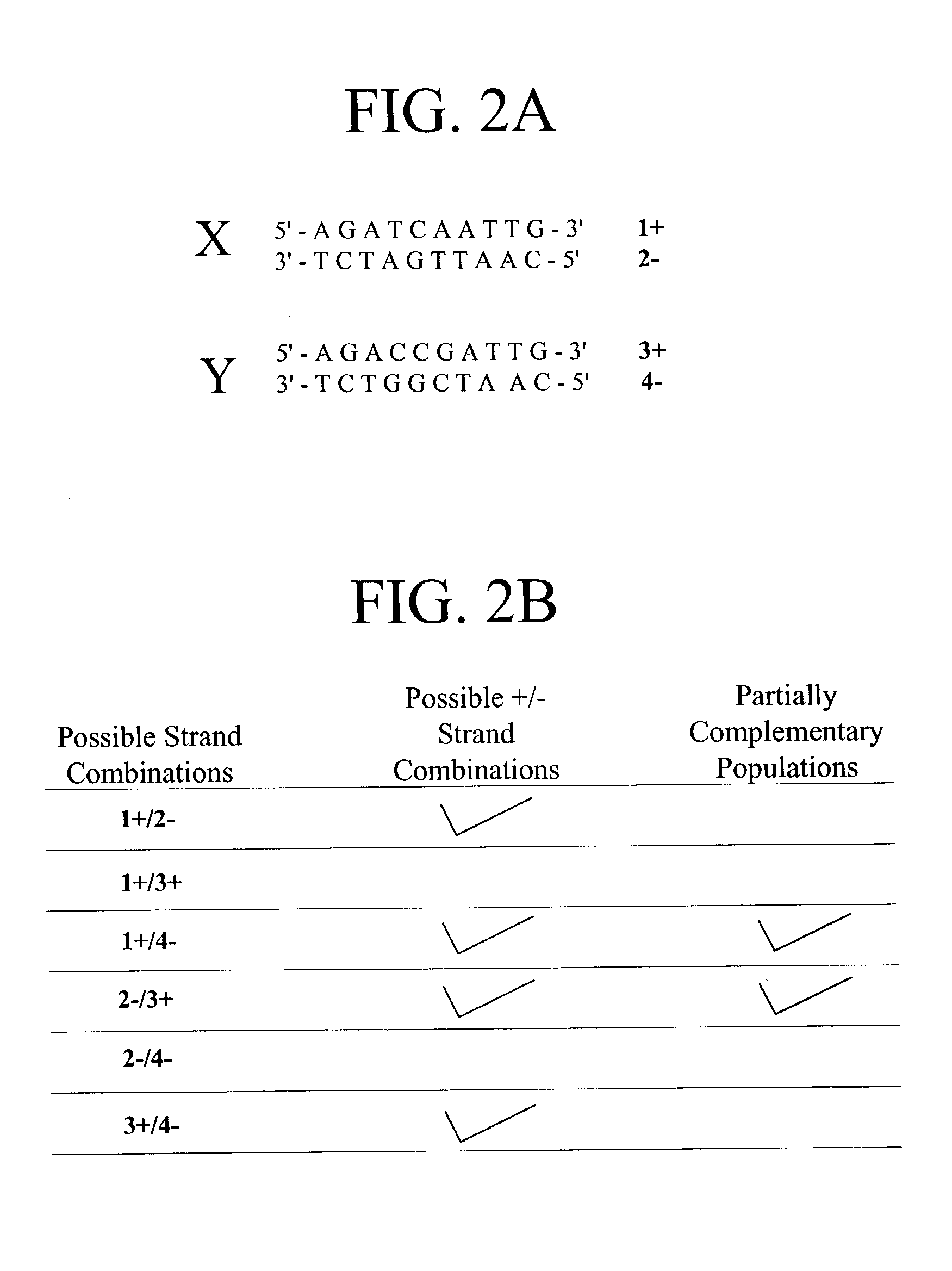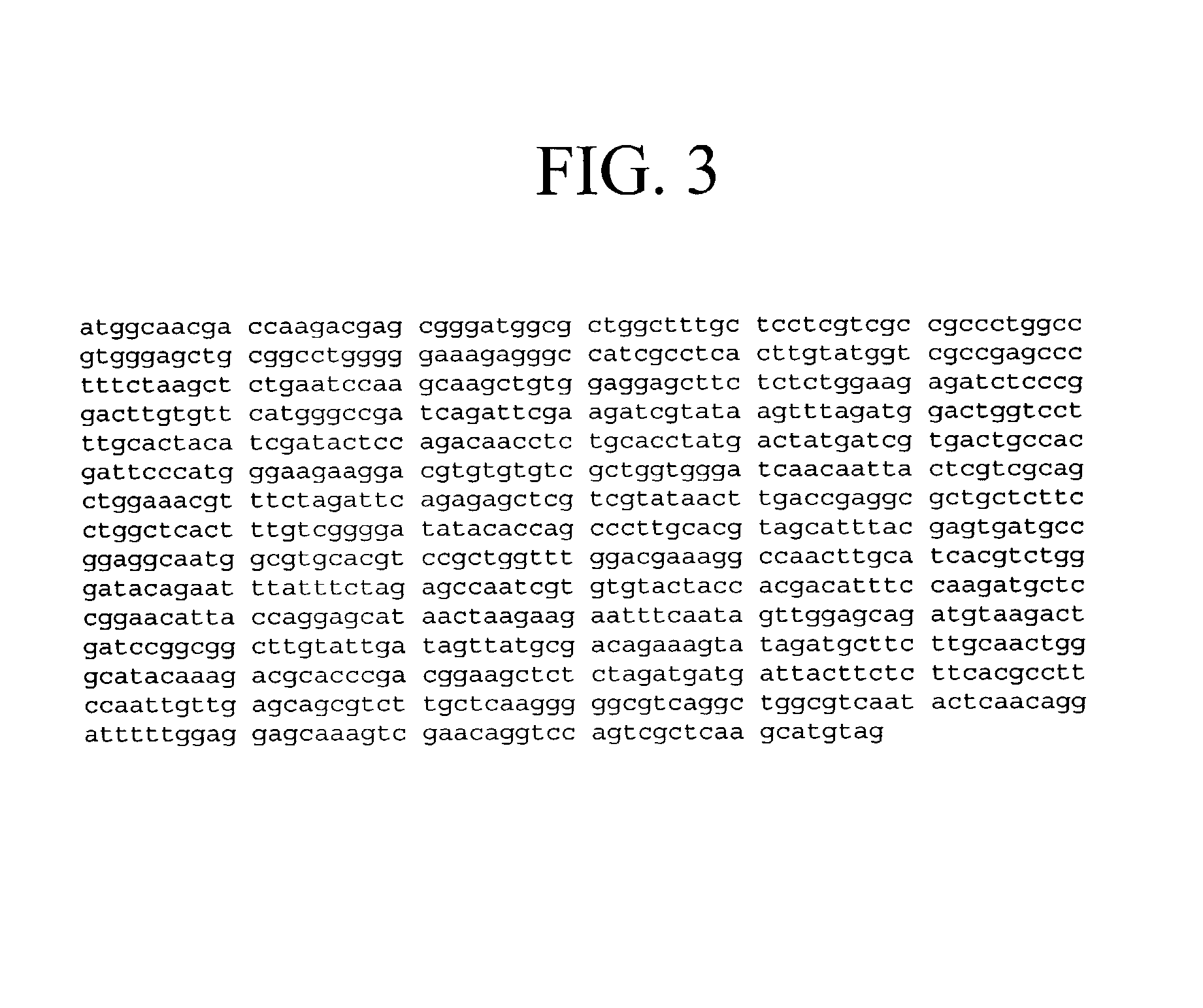Mismatch endonucleases and methods of use
a technology of endonucleases and mismatches, applied in the field of mismatch endonucleases and methods of use, can solve the problems of increasing the ratio of deleterious mutations to beneficial mutations, the process is tedious and laborious, and the rate at which sequences incur mutations with undesirable effects
- Summary
- Abstract
- Description
- Claims
- Application Information
AI Technical Summary
Benefits of technology
Problems solved by technology
Method used
Image
Examples
example 2
Cleavage of Mismatched DNA Substrate by CEL I
[0248] This example teaches the preparation of CEL I enzyme and its use in the cleavage of mismatched DNA substrate.
[0249] CEL I enzyme was prepared from celery stalks using the homogenization, ammonium sulfate, and Concanavalin A-Sepharose protocol described by Yang et al. (Biochemistry, 39:3533-3541 (2000), incorporated herein by reference. A 1.5 kg sample of chilled celery stalks was homogenized with a juice extractor. One liter of juice was collected, adjusted to 100 mM Tris-HCL, pH 7.7 with 100 micromolar phenylmethylsulfonyl fluoride (PMSF), and filtered through two layers of miracloth. Solid (NH.sub.4).sub.2SO.sub.4 was slowly added to 25% saturation while stirring on ice. After 30 minutes, the suspension was centrifuged at 27,000 g for 1.5 hours at 4.degree. C. The supernatants were collected and adjusted with solid (NH.sub.4).sub.2SO.sub.4 to 80% saturation while stirring on ice followed by centrifugation at 27,000 g for 2 hours....
example 3
Use of Cloned CEL I in the GRAMMR Reaction
[0254] This example teaches that CEL I from a cloned source can be used in place of native CEL I enzyme purified from celery in Genetic Reassortment By DNA Mismatch Resolution without any noticeable change in results.
[0255] The cDNA of Cell was cloned from celery RNA. The gene was inserted into a TMV viral vector and expressed. Transcripts of the construct were used to infect Nicotiana benthamiana plants. Infected tissue was harvested, and the CEL I enzyme was purified. The results of the GRAMMR reaction obtained using the purified enzyme were compared to those using CEL I purified from celery, and were found to be similar.
[0256] Reactions were set up using twenty-one nanograms of the circular double-stranded heteroduplexed GFP plasmid substrate, as described in EXAMPLE 3, in ten microliters containing 1.times. NEB ligase buffer, 0.5 mM each DNTP, 0.2 units T4 DNA ligase (Gibco / BRL), 1 unit of T4 DNA polymerase, and either 1.0 microliter of ...
example 5
Use of RES I in the GRAMMR Reaction
[0263] This example teaches that RES I can be used in place of native CEL I enzyme purified from celery in Genetic Reassortment By DNA Mismatch Resolution without any noticeable change in results.
[0264] GRAMMR was performed between the wild-type Aequorea Victoria GFP gene (Prasher, et al., Gene111(92)229) in a pBS derivative (Stratagene, La Jolla, Calif.) encoded by pBSWTGFP (SEQ ID NO:31) and a variant with mutations to increase fluorescence intensity in E. coli, and to alter the emission wavelength to blue light emission (Crameri, et al., Nat Biotechnol 14(96)315; Heim et al., PNAS91(94)12501; Yang, et al., J Biol Chem 273(98)8212). This variant gene (SEQ ID NO: 33), encoded by the plasmid pBSC3BFP, as shown in FIG. 5 (SEQ ID NO: 32), encodes a fluorescent protein that emits bright blue light when excited by longwave UV light.
[0265] The GRAMMR reactions were performed on GFP / c3BFP heteroduplexes in a circular, double-stranded plasmid DNA context....
PUM
| Property | Measurement | Unit |
|---|---|---|
| temperature | aaaaa | aaaaa |
| total volume | aaaaa | aaaaa |
| pH | aaaaa | aaaaa |
Abstract
Description
Claims
Application Information
 Login to View More
Login to View More - R&D
- Intellectual Property
- Life Sciences
- Materials
- Tech Scout
- Unparalleled Data Quality
- Higher Quality Content
- 60% Fewer Hallucinations
Browse by: Latest US Patents, China's latest patents, Technical Efficacy Thesaurus, Application Domain, Technology Topic, Popular Technical Reports.
© 2025 PatSnap. All rights reserved.Legal|Privacy policy|Modern Slavery Act Transparency Statement|Sitemap|About US| Contact US: help@patsnap.com



